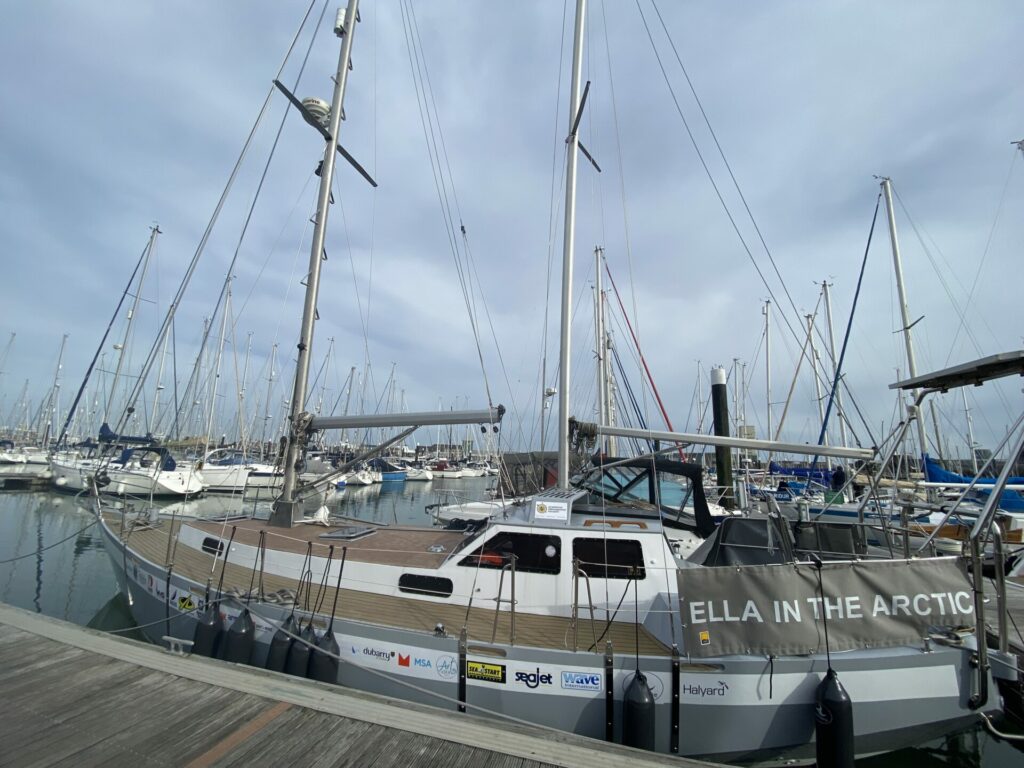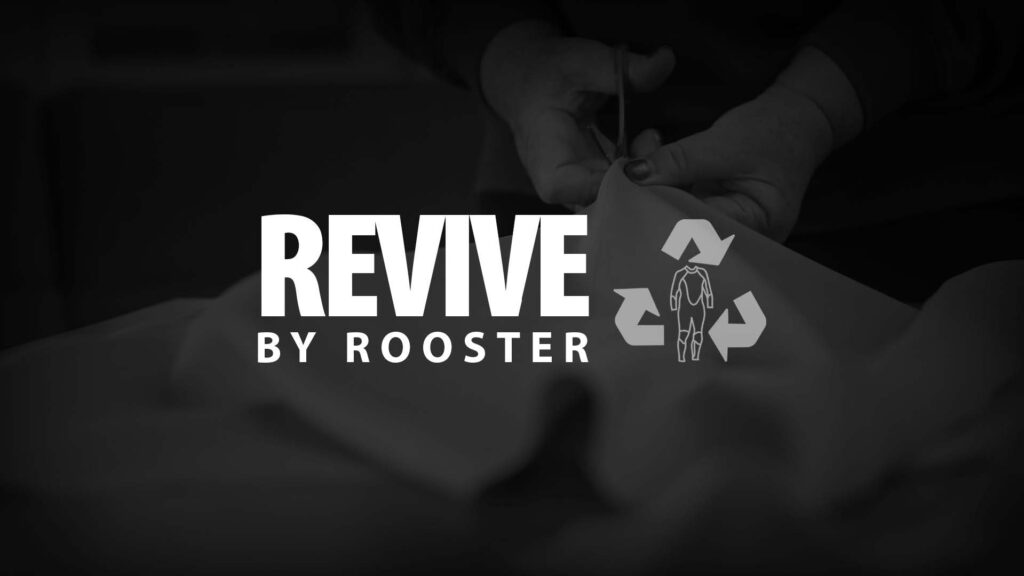The Green Blue shares its top tips for lowering environmental impact whilst antifouling your boat this season.
Antifouling paints are, by their nature, a hazardous chemical mixture that once applied to a boat can keep the boat’s hull clean but can be detrimental to the marine organisms that encounter the boat. When the paint becomes flaked and chipped the surrounding marine life can mistakenly ingest the paint which can inadvertently cause negative impacts further up the food chain. By following the antifouling best practice method, Protect, Collect, Dispose, we can all significantly reduce antifouling’s unintended impact on the environment.
Before
We can all start with small changes, when preparing to antifoul your boat ask your local chandlery for the most environmentally friendly paint which is suitable for your boat, and its environment. Many antifoul paints contain quantities of copper or zinc which, although helps to preserve the hull from unwanted growth, can also poison and contaminate the surrounding marine life and their habitats. Non-biocidal coatings such as silicone, vinyl or ultrasonic technologies are now available and are much less damaging to marine life. To read more about the variety of antifoul available, and to find the right one for your boat, read our handy guide ‘Choosing an antifoul.’
Protect
The next step is to ‘Protect’ the nearby environment, lay down a tarpaulin or groundsheet before starting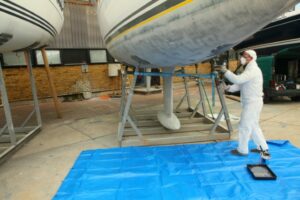 any work on your boat. This inexpensive act can make a huge difference to the local wildlife. Not only does the tarpaulin protect the surface directly under the boat from paint drips or spills, but it also acts as an effective instrument to collect and dispose of loose debris and scrapings from the boat.
any work on your boat. This inexpensive act can make a huge difference to the local wildlife. Not only does the tarpaulin protect the surface directly under the boat from paint drips or spills, but it also acts as an effective instrument to collect and dispose of loose debris and scrapings from the boat.
Remember to protect yourself too with Personal Protective Equipment (PPE) and work in a well-ventilated area to prevent inhalation of toxic paint fumes and avoid paint coming into contact with your eyes, mouth, skin and clothing.
Collect
This brings us onto the next step in the process, ‘Collect.’ The tarpaulin should make it easier to collect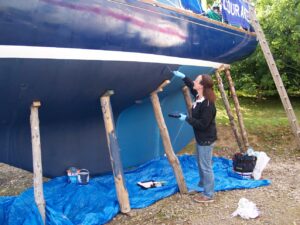 large remnants but using an industrial vacuum-cleaner linked to the paint scraper will minimise the amount of loose paint flakes and dust. Wet sanding will also help to prevent dry dust from escaping into the environment. Any water used when pressure washing the boat should also be collected, this can be achieved using portable bunding or a filtered washdown facility provided by some marinas, boatyards or harbours.
large remnants but using an industrial vacuum-cleaner linked to the paint scraper will minimise the amount of loose paint flakes and dust. Wet sanding will also help to prevent dry dust from escaping into the environment. Any water used when pressure washing the boat should also be collected, this can be achieved using portable bunding or a filtered washdown facility provided by some marinas, boatyards or harbours.
Dispose
The final step is to efficiently ‘Dispose’ of antifouling waste. Always ensure that all hazardous waste such as paint pots, disposable gloves and paint scrapings are disposed of in hazardous waste bins. Don’t forget that Personal Protective Equipment, which should always be worn, may also need disposing of in a hazard waste bin.
Benefits
There are of course, many benefits to applying antifoul paint and some of them are environmental. These can include a decrease in drag and less propeller restraint resulting in fuel efficiency. Antifouling can also reduce the transfer and spread of invasive species, however, if more environmentally friendly alternatives are adopted this will result in a greater overall positive impact to safeguard our waters.
Get social
All boat owners can play a vital role in minimising the risk to marine life from being inadvertently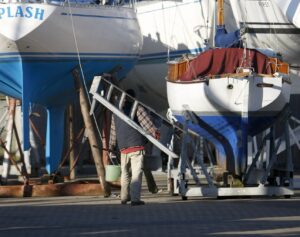 affected by antifoul. For further advice on applying antifoul, visit the Info and Advice pages. You can help by sharing The Green Blue’s #ProtectCollectDispose posts on social media, and by downloading antifouling best practice posters and infographics from The Green Blue website and displaying them at your local club.
affected by antifoul. For further advice on applying antifoul, visit the Info and Advice pages. You can help by sharing The Green Blue’s #ProtectCollectDispose posts on social media, and by downloading antifouling best practice posters and infographics from The Green Blue website and displaying them at your local club.
To find out more or to get involved with the ‘Protect, Collect, Dispose’ campaign, follow The Green Blue on Facebook and Twitter: @TheGreenBlue Instagram: @the_green_blue. You could even share your own antifouling best practice photographs, don’t forget to tag The Green Blue on social media and use the tag: #ProtectCollectDispose.


